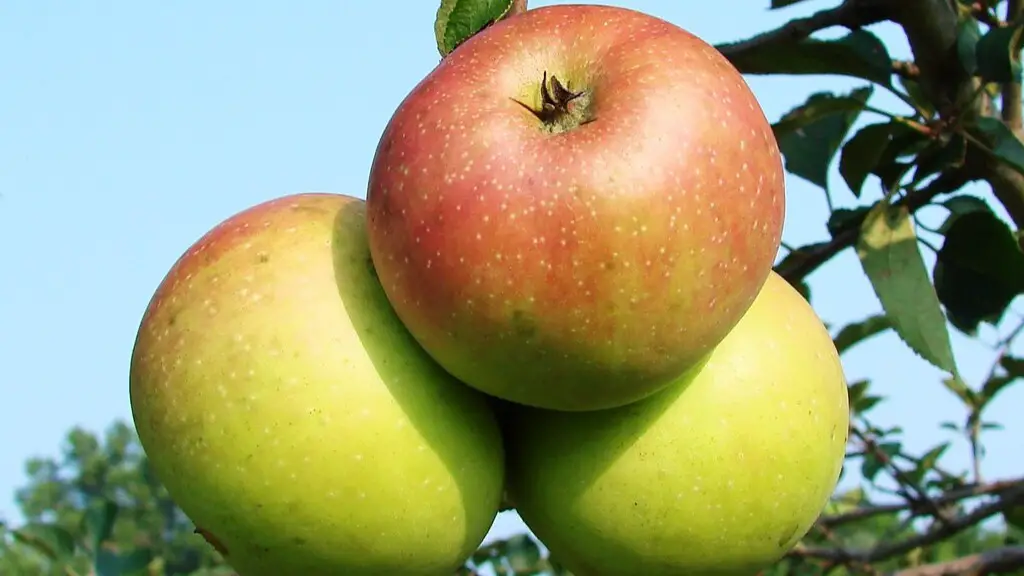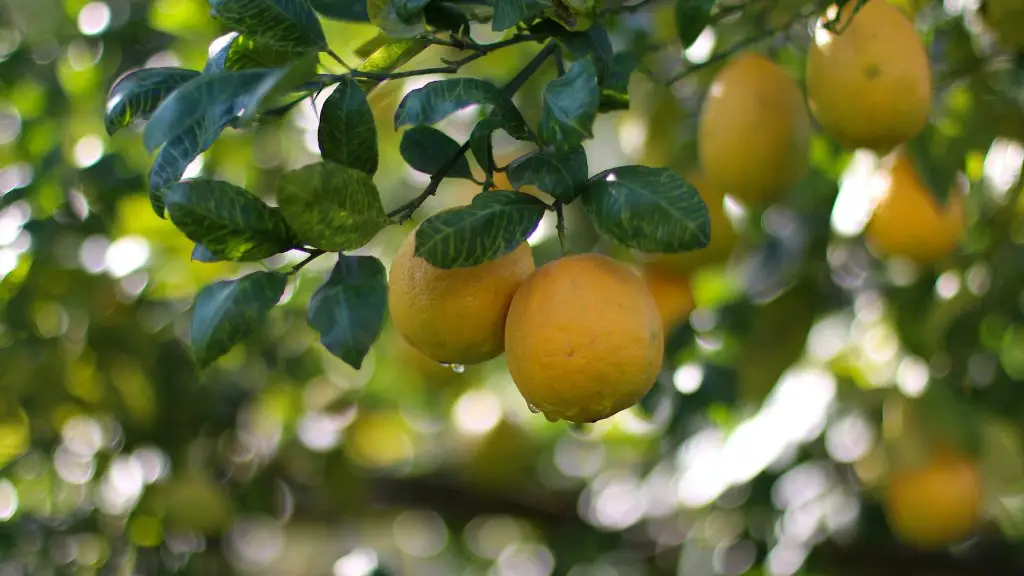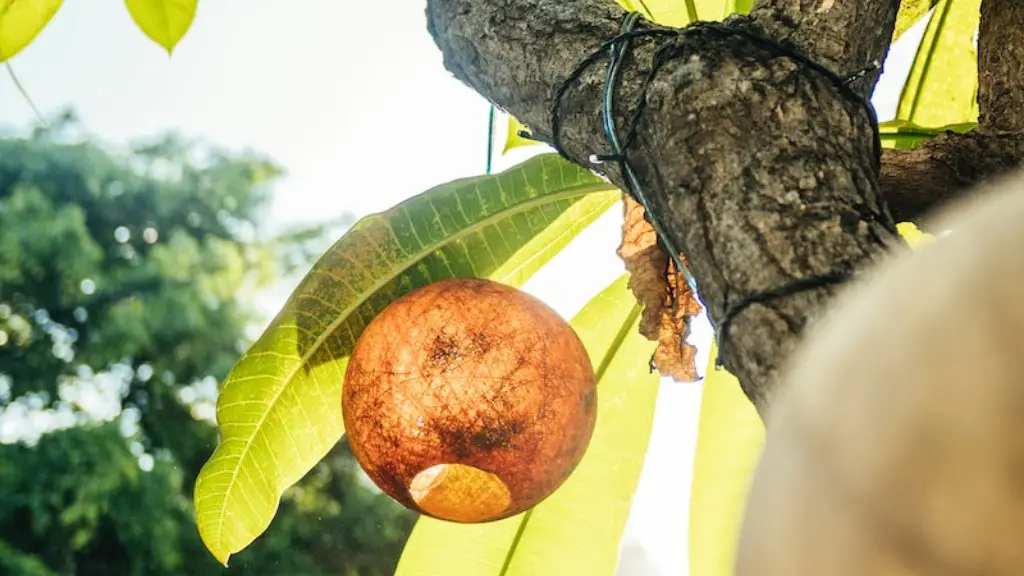Balance Water And Fertilizer Inputs
Avocado trees require the right balance between water and fertilizer inputs to stay healthy and robust. In dry areas, the lack of water can be a key problem for avocado trees. Too much water can also cause stress for the tree, as it can encourage the tree to produce lots of leaves, but poor fruit and young, weak branches. It’s important to moderate your irrigation to give the tree just enough water to produce lots of fruit and support healthy growth.
Fertilization also plays an important role in avocado tree health and growth. In order to provide adequate nutrients to the tree and encourage fruit development, your tree should be nourished with a moderate amount of an appropriate fertilizer formula. The formula should contain nitrogen and potassium, along with other micronutrients depending on the soil conditions where the tree is located.
Allow Lots Of Airflow
If the soil and foliage of an avocado tree are too wet, it can increase drought stress for the tree, as well as lead to fungal diseases. Growing avocado trees in well-draining soil and allowing for enough air flow helps to reduce the likelihood of disease. Pruning is also important for ensuring adequate airflow around the tree and keeping it well-formed.
Protect From Borers
Avocado trees are also vulnerable to borers, which are a type of beetle larva that feed on the living wood of avocado trees and other fruit trees. To prevent damage to your tree and protect your harvest, examine the trunk and branches of your tree regularly and take prompt action to remove or treat any appearance of borer larvae or damage.
Beware Of Sunburn
Avocado trees need some sunlight in order to produce good fruit and grow strong branches, however they are also susceptible to sunburn on their leaves and fruit. Similarly, strong winds can cause physical damage to the tree and also increase susceptibility to sunburn. In hot, dry climates, it is important to mulch your tree to cool the roots and remove old leaves to reduce the chance of sunburn occurring.
Choose The Best Variety
Avocado trees come in several different varieties and it is important to choose the best one for your climate and location. Depending on your soil texture, light and wind exposure, you will want to select the variety that can best withstand your particular conditions. Consulting with your local nursery can be very helpful in making the right selection.
Deal With Unfavorable Soil
If the soil where you are growing your avocado tree is not appropriate, you may need to make adjustments. To ensure that your avocado tree has enough air and water, you may need to build raised beds, add drainage material, or mix compost into the soil to allow nutrients to reach the tree’s roots.
Manage Pests And Diseases
The last step in keeping your avocado tree healthy is to make sure that it is free of pests and diseases. Insects, fungi, and bacteria can all cause significant damage to your tree. Regularly inspecting the leaves, trunk, and fruits for signs of damage, and being sure to treat any issues that arise quickly with the appropriate chemicals, will help your tree remain in good condition.
Keep The Trees Healthy
Avocado trees can be quite hardy and long-lived if you follow the above steps to keep them healthy. By supplying the tree with the right balance of water and fertilizer, providing enough airflow and protection from the elements, selecting the right variety for your climate and soil conditions, and managing pests and diseases, your avocado tree can thrive and produce delicious fruits for many years.
Feed The Trees Appropriately
In order to get the most out of your avocado trees, it is important to ensure they are fed appropriately. With the right nutrition, they can produce better quality of fruits and flowers, as well as be more resistant to diseases. Fertilizers such as well decomposed manure, compost, and a balanced mineral fertilizer such as a 14-14-14 can all help promote healthy growth. Depending on soil type and climate, the fertilizer needs may vary, so it is best to consult a local expert for advice when deciding what fertilizer is best for your tree.
Creatively Handle Shade
If you have a tree that is casting a lot of shade, it can be difficult to grow avocados. Shade has to be managed carefully so as to not drown the fruit in too much of an area and to be creative about how the surrounding area is set up. For example, raised beds or planters can be used to give the plant more direct sunlight and more air circulation.
Choose Varieties By Taste And Quality
Knowing how to select the right variety is also important, as some are more suited to particular conditions than others. Depending on your particular taste, some varieties of avocado may taste better than others and choosing a variety with a higher quality is also important. Therefore, it is essential to do your research and talk to local experts to determine what variety of avocado tree is best for your particular area and needs.
Propagate Cuttings Instead Of Purchasing Trees
Propagating cuttings is a great way to save money and get the most out of your avocado tree. By planting a scion from a high-quality, older tree, you can maintain the same quality of tree, and with more care, the branch may even produce larger and better quality fruits. Additionally, propagation can help create a stronger, sturdier tree in comparison to an immature tree if purchased from a nursery.
Maintain The Health Of Other Trees
Other trees in the vicinity of your avocado tree may also need to be taken care of, as they may be a contributing factor to the health of your avocado tree. For example, if you have fruit trees or other trees that produce a lot of shade, it is important to assess how their growth can be managed to promote better air circulation and sunlight for your avocado tree.
Water Appropriately For Best Results
Watering is important for the overall health of the avocado tree, however it is essential to water correctly. In areas with dry weather, especially during the summer months, you need to pay special attention to your tree’s water needs. If the roots don’t get enough water, the tree will have a difficult time establishing and won’t produce good-quality fruits. Make sure to water deeply and regularly to provide the avocado tree with the proper amount of moisture it needs.
Practice Good Harvesting Techniques
Harvesting your avocados needs to be done thoughtfully, as the technique can determine the quality and shelf life of the fruit. In order to avoid damaging the tree, make sure to use pruning shears when harvesting and never pull a fruit from the tree. Additionally, wait until the fruit is a dark green color before harvesting and make sure you support it with your hand before you take it off the tree so as not to damage it.


